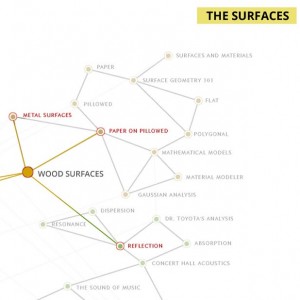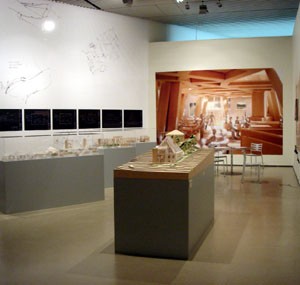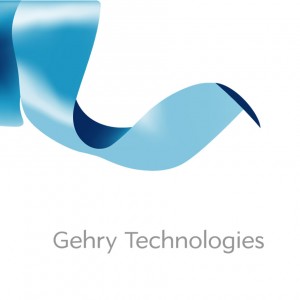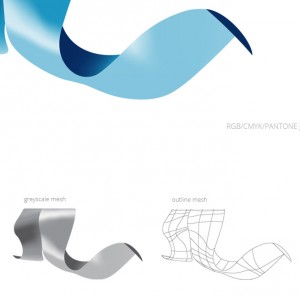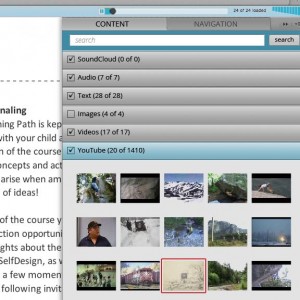V5
Design Solutions
intelligence | creativity
Vanilla Five is a creative company
V5 creates thoughtful and engaging works.
Past Projects
- Frank Gehry | Digital Project Exhibition
- Walt Disney Concert Hall | interactive multimedia and publication
- Sagrada Familia | video
- Gehry Technologies | Identity
- SelfDesign Learning Foundation | Brand + Identity
- Competence
- Design Thinking/Ideation
- User Experience/Interface
- Brand Design/Experience
- Exhibition Design
- Industrial Design
- Graphic Design
- Select Clients
- Gehry Partners
- Gehry Technologies
- Swire Properties
- Nikon Digital
- SFU - Contemporary Arts
- SelfDesign Learning Foundation
- Works Exhibited at
- MOCA | USA
- Vitra Museum | Germany
- The Design Museum | London
- Milan Triennale | Italy
- National Building Museum | USA
- DAC | Denmark
- Walt Disney Concert Hall | USA

WDCH
INTERACTIVE | PRINT DESIGN
Walt Disney Concert Hall. An interactive multimedia project and publication that takes people behind the scenes, and inside the design and realization of The Walt Disney Concert Hall, to reveal hidden relationships and interconnections.
Why
The Walt Disney Concert Hall is a highly complex, world-class acoustic space. The building’s form conceals an intricate interrelationship of building design processes and systems. These overlapping competencies deeply influenced the evolution and success of the Concert Hall and yet were not immediately apparent for visitors to readily appreciate.How
V5 conceived an interactive media project with an informative concept-map user interface. Through this, viewers could explore the concert hall and the building components, while also revealing the underlying connections and influences between the building design process, fabrication concerns, acoustic requirements, architectural considerations and construction technologies. Viewers discovered how 3D-based technologies were both developed and perfected over the 15-year creation of this iconic building, and how they came together to create a world class acoustic hall and striking landmark for the city of Los Angeles.Result
The project is now used on an ongoing basis by concert hall tour guides to help visitors gain insights into these connections, before taking them on the physical tour.




FRANK GEHRY – Digital Project
EXHIBITION DESIGN
Digital Project. Gehry's architecture was realized in a landscape of a confining architectural-engineering-construction practice. How was this possible in a context that disempowered architectural innovation? This video-based and physical exhibition took an in-depth look at the radical application of pioneering 3D modelling and manufacturing processes in Architecture. The intense work and thought required to realize Gehry's architectural vision had a major paradigm shifting and pivotal impact on the entire AEC industry. This successful interactive exhibition toured many international venues, including The Danish Architecture Centre, MOCA-LA, The Vitra Museum, The Milan Triennale, The National Building Museum, The Corcoran, and Millennium Court Arts Centre, among others.
Why
The work done by Gehry Technologies (GT) was initially developed in-house for realizing Gehry’s architectural vision - an architecture that was challenging to build with the methodologies and practices in the existing AEC (Architecture, Engineering, Construction) landscape. The solutions developed in these efforts allowed Gehry to build radically innovative architecture within project budget constraints, and subsequently led to a massive paradigm shift throughout the AEC industry. This was a hidden story of radical innovation and design thinking that needed to be shared.How
Hanif Janmohamed, V5 Founder, was commissioned by Gehry to create an exhibit to showcase the work of Gehry Technologies in the studio’s practice, as part of a major Gehry retrospective at MOCA-LA. Hanif designed an installation of asynchronous video loops illustrating core elements and interactions between the GT design development process and the studio practice.
An ambient soundscape for the installation was punctuated by key audio events that synchronized with the videos. This helped focus and direct the viewer's attention and created key, meaningful connections. The success of this installation led to a commission by the Danish Architecture Centre (DAC) to design a large exhibition on the work of GT, entitled Digital Project.
Based on the success of the MOCA exhibit, V5 was commissioned to design and realize a major exhibition on the subject of 3D design in the AEC industry and the revolutionary work of Gehry Technologies and Gehry Partners. Working closely with Kirsten Kiser, Curator and the Danish Architecture Centre (DAC), V5 created a large-scale video-based exhibition in which the audience could wander freely through an open space populated with freestanding video monitors. These featured ongoing looped narratives focused on core topics exploring the evolution and implementation of the parametric design process in Gehry's architecture. Audio was delivered within focused zones around the monitors and viewers were drawn into a complex and layered story-scape, expressed through the words and ideas shared through interviews and conversations with Gehry, and his team of industry leading professionals.Result
The MOCA installation was highly successful and became an energetic locus in the exhibition, with people gathering around it for long periods of time.
The DAC exhibition was a major success. The exhibit's core premise allowed viewers to wander through the exhibition, and drift in and out of narrative spaces under sound domes in proximity of the videos, or engage directly and listen more closely with headsets. This encouraged the participatory engagement with the video content and enabled a deeper more holistic understanding among viewers that would not have been possible in a linear, didactic presentation.
A significant global touring schedule followed the original DAC exhibition. Tour highlights include MOCA-LA; The Vitra Museum; Triennale di Milano; Danish Architecture Center; National Building Museum; Corcoran Gallery; Design Museum-London; among other venues in Europe, the USA and China.

SAGRADA FAMILIA
VIDEOGRAPHY
The Sagrada Familia Church was Antoni Gaudi’s unfinished masterpiece. A video commissioned by Danish Architecture Centre, Denmark, helped viewers appreciate the complexity involved in the monumental task of its completion. During the Spanish Civil War, most of Gaudi's physical models were destroyed by vandals. This video interview with Marc Burry, Executive Architect, explores the literal and figurative picking up of the broken pieces, and illustrates the pivotal nature of 3D parametric design in interpreting Gaudi’s vision from the surviving fragments and pieces.
Why
Gaudi’s design for the Sagrada Familia Church was deeply mathematical in nature. Gaudi had expressed his architectural intentions through three-dimensional models rather than drawings, however, during the Spanish Civil War, most of Gaudi’s drawings and models for the project were destroyed, making further reconstruction work and project completion nearly impossible. Parametric modelling applied to the surviving fragments, unlocked the geometric DNA of Gaudi's vision and made its completion a possibility. 3D building technologies are now commonly employed to realize architectural projects - in this case, they were used to decipher and construct this previously unrealizable masterwork. The completion project is a compelling example of technology and process applied to other paradigms.How
Marc Burry, executive architect for the Sagrada project had been using parametric modelling and 3D building technologies in innovative ways to reconstruct and realize Gaudi's original intent. We developed a video that interwove an interview with Marc, with examples of how these technologies were being applied in the restoration project—in particular, for analyzing the few surviving fragments of the destroyed models to reveal the essential geometries intrinsic in Gaudi’s masterwork.Result
Viewers were able to follow the story of the Church's evolution, and learned some fundamentals of 3D parametric design, and how they were being applied - gaining clear insights into the crucial role of technological innovation and its radical application in the realization of Gaudi’s original vision.
Gehry Technologies
Visual Identity & Iconography Program
Gehry Technologies grew out of the in-house technology support for the firm's architectural practice. As it evolved into a larger public offering as a software suite, the user experience benefitted from additional evolution through a new iconography program for the interface, and a new visual identity for GT.
Why
Gehry Technologies grew from a series of in-house technology solutions - originally developed to support Gehry's architectural practice - into a public software suite called Digital Project. As the software and methodology evolved into a more comprehensive software product, the project called for an evolution of the user experience, further development of the user interface, and a new corporate identity for Gehry Technologies.How
V5 worked with the Gehry Technologies management team to develop a simple design strategy, and engaged in an iterative process to create a new visual identity, collateral material and brand guidelines.
Gehry Technologies was also engaged in a significant redesign effort to integrate elements of Dassault Systems, Catia application and GT’s 3D functionality and methodology into their new Digital Project suite. V5 was commissioned to support the effort. Working as a project consultant V5 brought user experience and interface design experience to the effort, and assembled a small team to design the iconography program for the project. V5 delivered a comprehensive icon set for the Digital Project software suite, and a roadmap for ongoing in-house development.
Result
A fresh and communicative visual identity, and comprehensive iconography for the Digital Project software. The brand guidelines and the framework for ongoing icon development ensured a smooth project evolution.
OMBU
SOFTWARE DESIGN
Ombu is a cloud-based application for the rapid authoring and sharing of rich-media web experiences. Evolved from field work in building content-driven interactive presentations with clients, Ombu provided a platform and collaborative framework for the creation of compelling interactive stories directly in real-time.
Why
In the creation of the Walt Disney Concert Hall project, the V5 project team had to create a highly adaptive workflow in order to maximize the value of very limited time available with the client. V5 developed a series of simple tools to help us quickly validate the complex WDCH story when we had direct engagement with the client. This allowed us to iterate project cycles in real time as we reviewed and evolved the project content with the client. The workflow helped us maximize the value of limited face time. It also revealed to us an emergent opportunity for developing this adaptive workflow into a more robust, formal application framework.How
Leveraging the experience, V5 developed an application for authoring and distributing rich-media presentations from the cloud within a web browser, creating a collaborative framework for teams to author rich media presentations. A significant feature of the application was embedding a highly customizable and intuitive navigation layer directly within the presentation content itself, allowing end users to experience both the content and navigation together. This seamless detail-in-context approach allowed users to stay oriented, and freed them to engage with and explore the content more deeply.Result
OMBU has been well received critically, with clients demonstrating its additional value for creating and distributing courseware and online training.
SELFDESIGN
STRATEGY | BRAND | IDENTITY | WEBSITE
SelfDesign Learning Foundation is the second largest K-12 distributed learning institution in BC. It is steeped in methodologies for passion-based learning and life-long learning engagement. The organization plays an invaluable role in the evolution of K-12 education through its vital service. A revised communication strategy, branding, identity, and website improved the organization’s outreach and growth opportunities.
Why
Funded by the BC Ministry of Education, SelfDesign is the second largest distributed-learning school in BC. Its unique learner-centric approach has been a pioneering new model for K-12 education. The organization’s branding and communications had grown organically over time, and required re-thinking to better meet a growing demand for alternative public education. There was a disconnect between the program offerings and the demonstrated demand. We needed to help the organization better present their philosophy and innovative programs, and to help parents and families better understand their options, supporting them in making informed choices for their child’s education.How
V5 put together a team of professionals appropriate for the task, and began research and dialog with the organization’s Stakeholders and its community of Learning Consultants. V5 developed a communication/design strategy, articulated a project development plan, and began to develop it in collaboration with SelfDesign’s Communications group. V5 conducted a comprehensive analysis of existing communications, and made core recommendations for shaping a new values-based, exo-centric communication culture for an organization focused on learners and best practices. V5 leveraged the shifted focus to create a clean, outward-looking brand identity and website as well as a clear customer-focused communication strategy, that the organization could build upon.Result
The resulting work was welcomed by the administration and was readily adopted by this community-based organization. The project helped galvanize the organization around their external communications, and made some inroads into fostering additional internal brand alignment around cohesive communication and identity.




